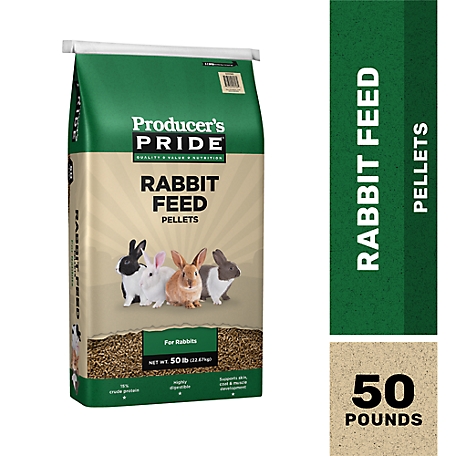Hill’s Science Diet Adult Sensitive Stomach and Skin Chicken and Barley Recipe Dry Dog Food
-
( 3 Reviews )Rated 5.00 out of 5 based on 3 customer ratings03
- SKU: 111028199
When your dog has special needs, support their diet with Hill’s Science Diet Adult Sensitive Stomach and Skin Dry Dog Food. This dry dog food is highly digestible to help ensure its nutrients are absorbed. Prebiotic fiber in the sensitive stomach dry dog food promotes beneficial gut bacteria and a balanced microbiome. The vitamin E and omega-6 fatty acids in the adult dry dog food nourish the skin for a healthy coat.
-
Producer’s Pride 15% Protein Rabbit Feed, 50 lb.
Rated 5.00 out of 505Producer’s Pride 15% Protein Rabbit Feed, 50 lb.
Rated 5.00 out of 505
When your dog has special needs, support their diet with Hill’s Science Diet Adult Sensitive Stomach and Skin Dry Dog Food. This dry dog food is highly digestible to help ensure its nutrients are absorbed. Prebiotic fiber in the sensitive stomach dry dog food promotes beneficial gut bacteria and a balanced microbiome. The vitamin E and omega-6 fatty acids in the adult dry dog food nourish the skin for a healthy coat.
- 30 lb. bag of adult sensitive stomach and skin dry dog food
- Prebiotic fiber in the sensitive stomach dry dog food fuels beneficial gut bacteria and supports a balanced microbiome
- Highly digestible adult dry dog food is optimal for nutrient absorption and easier stool pick-up
- Vitamin E and omega-6 fatty acids in the dry dog food for skin nourishment
- Recommended for adult dogs with sensitive stomachs and skin
Additional information
| Country of Origin | Made in USA |
|---|---|
| Breed Size | Small, Medium, Large, Extra Large |
| Flavor | Chicken and Barley |
| Health Features | Sensitive Skin, Sensitive Stomach, Digestion Support |
| Life Stage | Adult |
| Primary Flavor | Chicken, Barley |
| Special Diets | Omega Fatty Acids |
| Manufacturer Part Number | 8839 |











by Chris
Great food for my dog’s
by Robin
Pricey but my dog has a sensitive stomach and she likes it.
by Salmon
My dog loves it